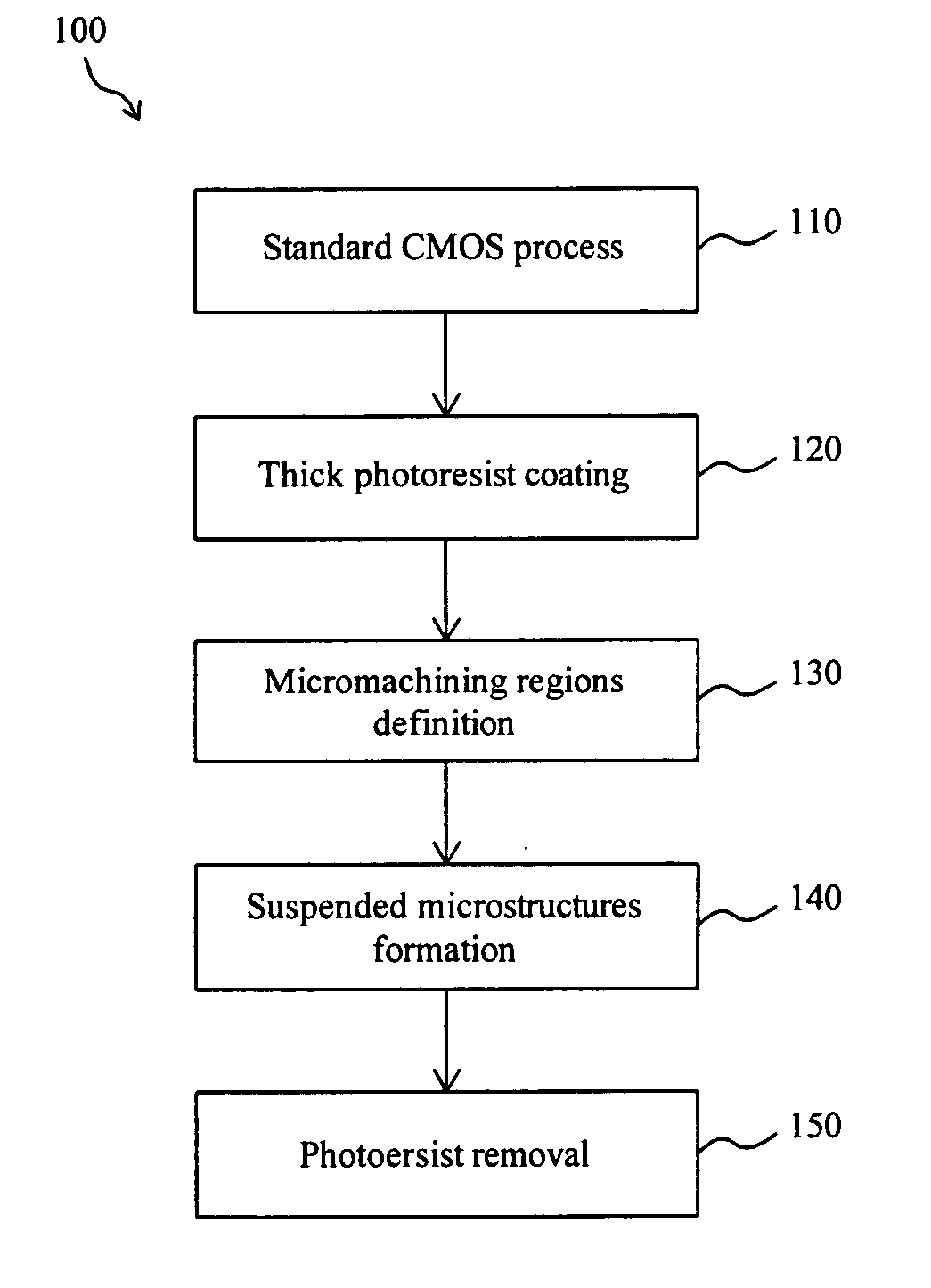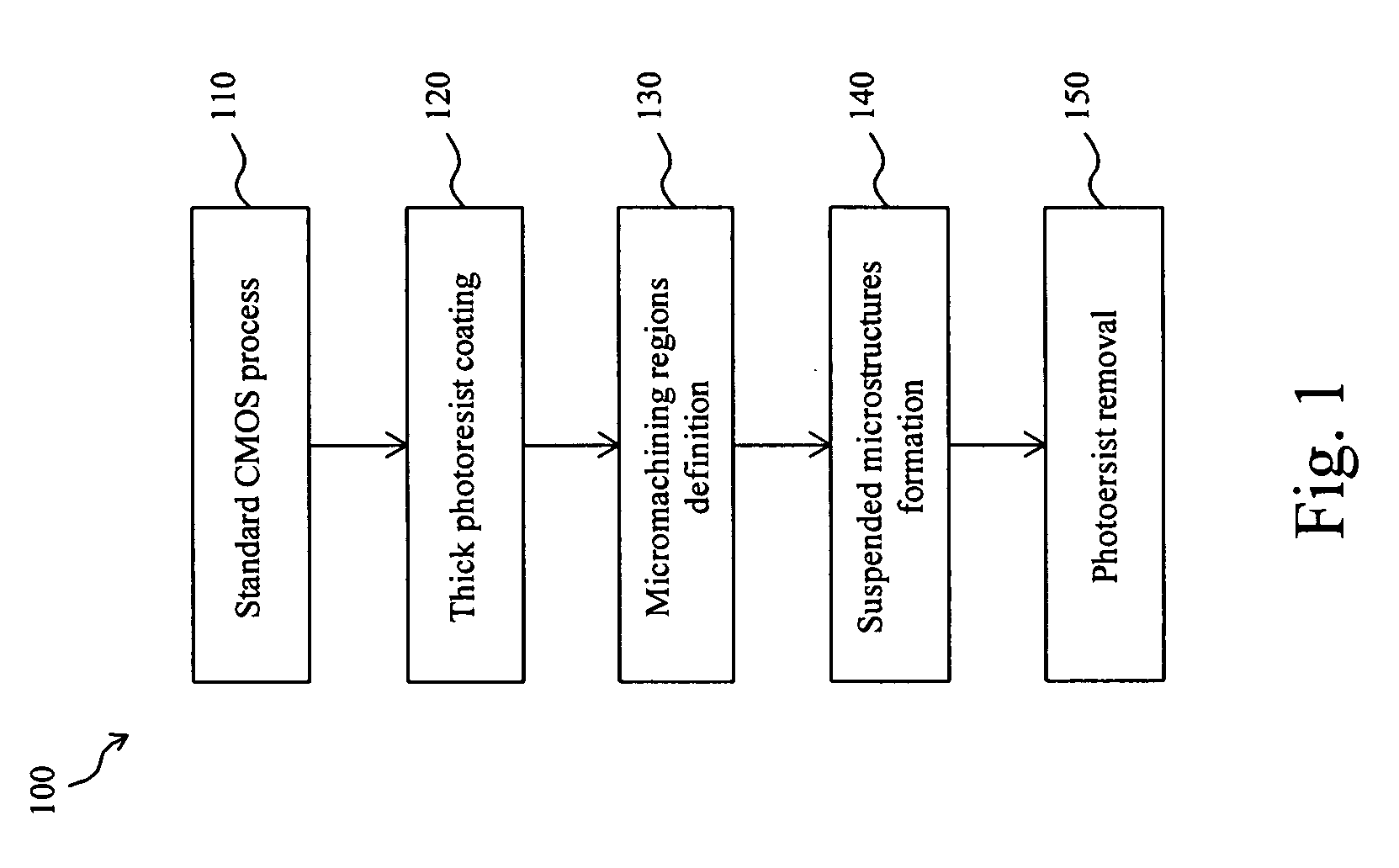CMOS-MEMS process
a technology of metal oxides and mems, applied in the field of complementary metal oxidesemiconductor (cmos) microelectromechanical system (mems) process, can solve the problems of easy deterioration of circuit performance, inability to propose evidence, damage to transistors, etc., to avoid the drawbacks of device performance deterioration and structure damage, increase process flexibility, and reduce cost
- Summary
- Abstract
- Description
- Claims
- Application Information
AI Technical Summary
Benefits of technology
Problems solved by technology
Method used
Image
Examples
Embodiment Construction
[0017]FIG. 1 shows a flowchart 100 of a CMOS-MEMS process according to the present invention. It starts with 0.35 μm double-poly quadruple-metal (2P4M) CMOS polycide process. After a standard CMOS process in step 110, as shown in FIG. 2, electronic circuits 310 and microstructures 270 are formed on a substrate 210. The microstructures 270 of MEMS components consist of polysilicon 222, metal layers 230, 232, 234 and 236, and dielectrics 240. The electronic circuits 310 include active devices and their corresponding contacts 250, vias 260 and interconnections 234 and 236. The first polysilicon layer 220 for forming the electronic circuits 310 can not interconnect to the second polysilicon layer 222. The contact holes between the metal layer 236 and the sources, drains and gates of the active devices, and the via holes between the multiple metallization layers 230-236, are filled with tungsten plugs to form the contacts 250 and vias 260. The multiple metallization layers 230-236 are ma...
PUM
 Login to View More
Login to View More Abstract
Description
Claims
Application Information
 Login to View More
Login to View More - R&D
- Intellectual Property
- Life Sciences
- Materials
- Tech Scout
- Unparalleled Data Quality
- Higher Quality Content
- 60% Fewer Hallucinations
Browse by: Latest US Patents, China's latest patents, Technical Efficacy Thesaurus, Application Domain, Technology Topic, Popular Technical Reports.
© 2025 PatSnap. All rights reserved.Legal|Privacy policy|Modern Slavery Act Transparency Statement|Sitemap|About US| Contact US: help@patsnap.com



